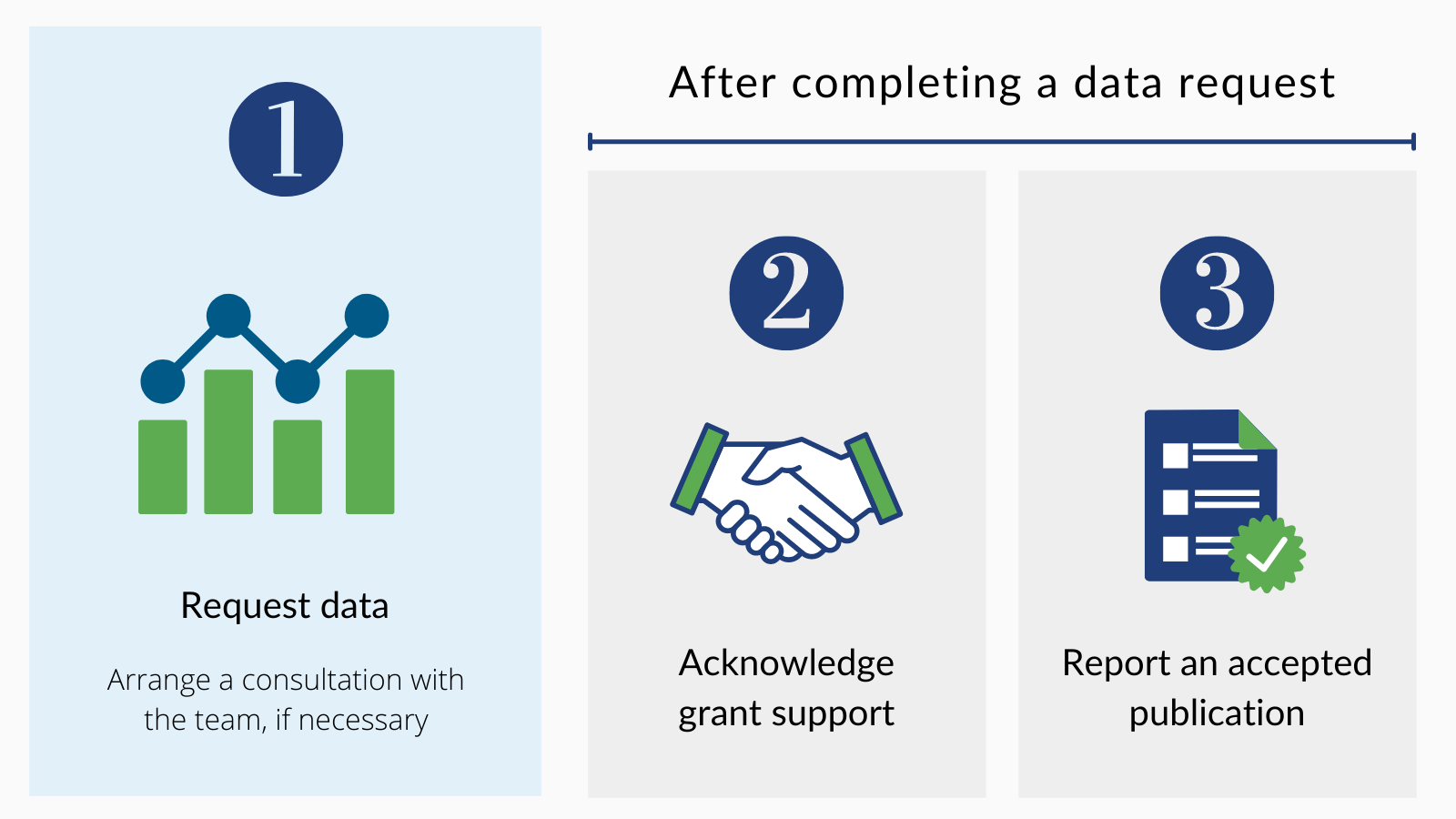Data resources
ORCATECH has a wide array of data resources available for further study. We use and develop technologies that can assess everyday home-based activities. These technologies provide millions of hours of real-world and real-time activity and health data.
Guide to accessing and using data

The process of using ORCATECH data for an upcoming project is as follows:
- Request data using the online form.
- If necessary, consult with our team after submitting a request.
- Acknowledge grant funding and support, as well as any data you used, in your publication.
- Notify our team about any articles that have been accepted for publication.
Requesting data and accessing data sets
Request data
To request data from ORCATECH, please complete the online form.
Types of data you can request
Within these categories you will find a list of data measures and data dictionaries.
Types of data:
- Computer use data
- Driving data
- Bed mat Data
- Computer mouse movement data
- PIR home motion sensor data
- Electronic pillbox usage data
- Scale data
- Watch data: Processed (aggregate daily steps and sleep metrics)
- Watch data: Raw
A group of various sensors collects our digital biomarker sensor data. Learn more about these sensors and the data they collect.
Types of data:
- NACC UDS and Non-NACC demographic data
- Online weekly health data
- Online reported data
- Data about sleeping patterns
- Data about loneliness
- Data about social isolation
- Data about physical activities
- Comorbidities measures
- Other cognition measurements
- Physical and neurological exam findings
- Neurocognitive test scores
- Demographics
- Health status
- Clinical diagnosis
- Personal and family history
- Positive/negative family history of dementia
- Age at service evaluations
- Age at onset, age at death
- Medications
- Laboratory tests
- MRI volumetrics
- Genotypes (APOE, HLA, SNP genotyping)
- Neuropathology diagnosis and tissue inventory information (when available)
Types of data:
- MMSE
- MoCA
- MoCA Blind
- Picture Completion
- Block Design
- Benson Figure Copy
- Benson Complex Figure Recall
- Digit Span Forward-NACC
- Digit Span Backward-NACC
- Digit Symbol
- Digit Sequencing Test
- Number Span Forward trials
- Number Span Forward length
- Number Span Backward trials
- Number Span Backwards length
- Boston Naming Test (30)-NACC
- MINT
- Visual Reproduction I
- Visual Reproduction II
- Logical Memory Immediate
- Logical Memory Delayed
- Craft Story paraphrase Immediate
- Craft Story paraphrase Delayed
- CERAD Word List Acquisition
- CERAD Word List Recall
- CERAD Word List Recognition
- Trailmaking Test Part A - seconds
- Trailmaking Test Part B - seconds
- Stroop Color Word
- Letter CFL Fluency
- Animal Fluency
- Vegetable Fluency
Available to download:
Available to download:
Available data sets
Within these categories you will find a list of available data sets.
This data set includes data generated by in-home digital sensors. Data was collected between 2017 - 2020 as part of the CART research study.
To view this data set, please fill out the data request form.
This data set includes summarized and processed data, generated by in-home digital sensors. Data was collected from 2015-2018 as part of the Oregon-based Life Lab study.
To view this data set, please fill out the data request form.
What to do after submitting a data request
Sign a repository agreement
Researchers are asked to sign a repository agreement that is tailored to the specifics of their data request.
This agreement identifies the grants that you should include in the acknowledgements section of your publication.
You will be sent a repository agreement after you submit a data request.
Reasons to acknowledge our past work
Many researchers, together with their staff and financial supporters, helped create these datasets and data dictionaries.
Acknowledging their past work in your publication is a vital step. By doing this you are:
- Recognizing their efforts
- Ensuring future funding for future research
- Helping researchers continue to share data
Notify our team about your publication
Once your publication has been accepted for publication:
- Please provide ORCATECH with a final copy of your manuscript
- Please upload the final copy of your publication to PubMed Central, in accordance with NIH public access policy
Reach out to us
For more information about the publication reporting process, please contact our team.
Send a message to Joan Benedict at benedicj@ohsu.edu